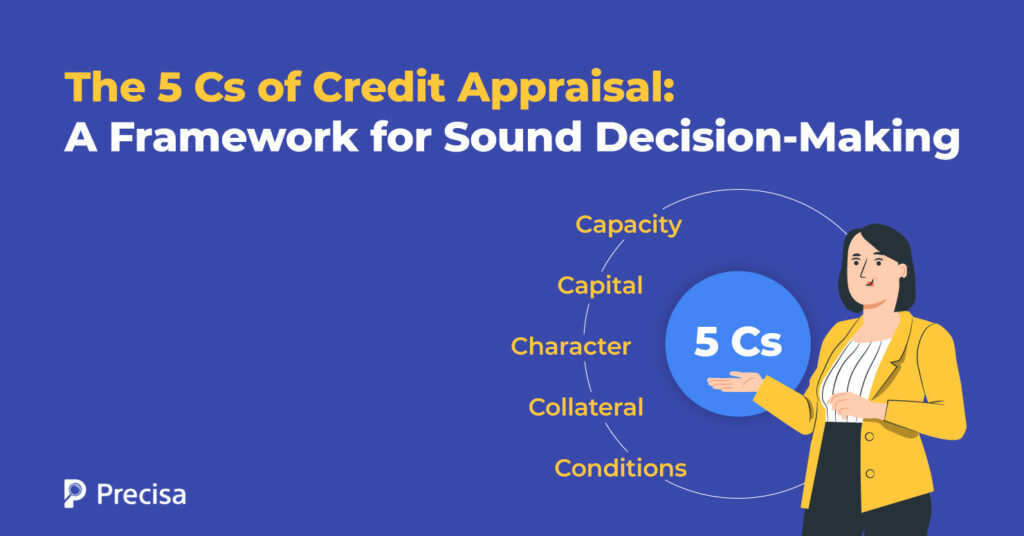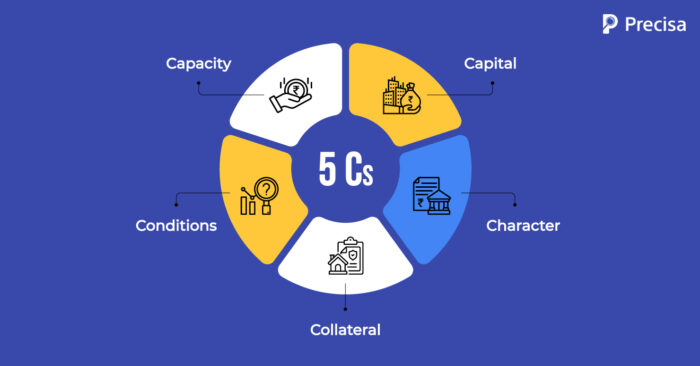
Predicting a borrower’s capacity to repay a loan is a complex process. Lenders must make a future forecast about a borrower’s creditworthiness based on limited data such as revenues.
However, today, several factors can influence such outcomes. There’s always potential for a business to stop generating revenues. For example, the demand for its products and services may suddenly decrease due to a market downturn.
As a result, lenders must be able to predict all potential outcomes and work with worst-case scenarios. One approach is to design a fool-proof credit appraisal system using superior bank statement analysis software.
In this blog, we explore how such a system helps lenders effectively analyse not one but five Cs of credit appraisal. Let’s begin!
What Is a Credit Appraisal?
A credit appraisal is a structured process lenders use to establish a borrower’s ability to repay a loan.
Lenders evaluate borrowers’ creditworthiness based on their financial data and credit history. Based on the results, lenders make data-driven underwriting decisions and approve or reject the loan application.
One systematic approach is to take into account the five C’s of a borrower – capacity, capital, character, collateral, and conditions.
The data analysis involved in this approach is extensive. However, using technology enables lenders to improve efficiency, accuracy, and speed.
For example, a superior tech-enabled credit appraisal software leverages several technologies to perform a comprehensive analysis of all financial information.
The software uses a combination of Artificial Intelligence (AI), Machine Learning (ML), Robotic Automation, Optical Character Recognition (OCR), And Cloud Computing to drive accurate repayment predictions.
Snapshot of the 5 Cs of Credit Appraisal: Precisa’s Role

Here’s a snapshot of how cloud-based analytics platform Precisa’s comprehensive credit appraisal system brings more efficiency and accuracy to the process, involving the following stages:
Capacity
Capacity refers to a borrower’s cash flows. A healthy, consistent cash flow indicates a borrower’s ability to repay a loan based on their current revenue or income scenario. Borrowers must submit their bank statements to demonstrate proof of revenue or income to lenders.
Going forward, the terms of the loan must align with cash flows. For instance, a home loan lender typically considers a 30 to 35% debt-to-income ratio. This ratio ensures that the monthly Equated Monthly Installments (EMI) are affordable and manageable for the borrower.
Capital
As the name suggests, capital refers to a borrower’s reserve of extra cash. This cash must not be used or required for the business’s daily operations. For instance, business owners may hold financial and non-financial assets of a specific value. Financial assets refer to savings or investments, while non-financial assets stand for real estate and machinery.
An individual borrower may also have a reserve of savings or investments aside from their monthly income. The implication of having capital is this – borrowers are not dependent on their immediate income or revenues to make EMI payments. They can continue making payments even if their revenues or income are temporarily stopped.
Character
A borrower’s past behaviour can be indicative of future behaviour. Hence, lenders look at past credit patterns to understand a borrower’s attitude towards credit.
The adoption of superior credit appraisal software helps isolate all bank transactions related to EMI repayments for loans, credit card payments, or any other type of credit.
Thus, lenders can get a clear idea of debt repayment patterns, including missed payments, penalties for bounced cheques, and late fees. Credit scores and reports, additionally, offer insight into a borrower’s credit patterns and potential to demonstrate positive credit behaviour.
Collateral
Lenders typically feel more confident about giving a loan when collateral is involved.
Say an individual borrower takes out a home loan or purchases a car with an auto loan. In these cases, the home or car serves as collateral. On the other hand, a business may take out a loan to purchase real estate or machinery. In these cases, the property, machinery, and invoice value serve as collateral.
If the borrower fails to repay the loan, the lender can seize the respective collateral, such as a house, car, property, or machinery, as applicable. Thus, collateral-based loans are considered lower on the risk scale.
Conditions
The last C refers to industry-specific conditions beyond a business’s or borrower’s control. For individual borrowers, the industry refers to the borrower’s area of employment. For business borrowers, it refers to their area of business.
Lenders aim to evaluate the state of the borrower’s industry and the forecast for its overall performance in the future. Using superior credit appraisal software enables lenders to predict a borrower’s creditworthiness based on current and historical data.
Benefits of a Comprehensive Credit Appraisal
Here’s a snapshot of how a five Cs-based, automated credit appraisal benefits lenders:
- This is a systematic approach, which brings more efficiency to the process. The use of automated credit appraisal software further streamlines operations.
- Businesses can enhance risk assessment capabilities and reduce the risk of growing delinquent debt cases and Non-performing Assets (NPAs).
- Lenders can offer cash flow-based lows to first-time borrowers with healthy cash flow who may not own any assets.
- Borrowers with good past credit behaviours are at an advantage in receiving a loan.
- Lenders can reduce the possibility of loan fraud using superior AI-powered credit appraisal software.
- Businesses can make data-driven decisions. They can leverage real-time data to offer more innovative and relevant products as they accumulate more data.
- The turnaround time for loan approvals comes down, which drives conversions.
- Businesses can also work with lean, highly productive teams, which reduces costs and drives profitability.
The Takeaway
Early technology investments toward building a superior, systemic, and thorough credit appraisal give lenders an edge. They can make data-driven decisions and accurately predict a borrower’s ability to repay a loan on time and in full.
More importantly, they can execute the process at scale and drive business growth without compromising accuracy and efficiency. This approach sets the foundation for profitable, sustainable lending operations.
Presica’s comprehensive and seamless financial data analysis solution simplifies and speeds up the process through automation. The software provides actionable insights on a customisable dashboard, thus helping companies make informed business decisions.
Request a free demo today!